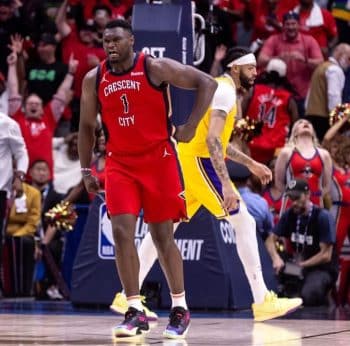NBA
Al Jefferson Fighting the NBA’s Stretch-5 Revolution

Some would say that guys like Indiana Pacers center Al Jefferson are a dying breed. The big man who can’t bring the ball up the court, can’t shoot threes, who does most of his offensive damage with his back to the basket is going the way of the dodo in the today’s NBA.
Jefferson does not believe this to be the case, though he is sharply aware of the differences in what NBA teams are expecting out of their big men.
“When I first got in the league, every team except maybe Dallas with Dirk Nowitzki was using both the four and five as back-to-the-basket guys,” Jefferson told Basketball Insiders. “Then a lot of teams used either, like the Clippers with Blake Griffin who posts up, but you might have a center like DeAndre Jordan who rebounds, defends, and block shots. Now you’ve got DeMarcus Cousins shooting threes. He shoots threes now!”
And Cousins isn’t alone. Players like Kristaps Porzingis, Anthony Davis and Karl-Anthony Towns have shown how the skill set of the seven-footer has changed over the course of the last five to 10 years. As someone who’s been in the league for 13 seasons, Jefferson has been around to bear witness to the transition.
“Dirk was the guy from day one who changed everything for big men,” Jefferson said. “Everybody wanted a guy like that when I first got into the league. If you remember, the number one draft pick in 2006 was Andrea Bargnani. He was supposed to be the next Dirk. It didn’t work out the way they wanted it to, of course, but everybody was chasing what Dallas was doing. Dirk was a matchup problem.”
Every team was looking for the next Nowitzki, but nobody really found him. In 2004, when Jefferson entered the league as a straight-from-high-school rookie with the Boston Celtics, most teams were still featuring what we’d consider to be more “traditional” big men. In fact, there were so many of those types of players that the Celtics couldn’t even find a spot for Jefferson at the center position.
“When I first got into the league, I was a four,” he said. “When I got to Minnesota, that’s when they moved me to the five, so even then the game was changing because they wanted the fours to be more [of a] space guy, kind of like the Dirk Nowitzki type. But when it really got to the point that is now, I would say it was that first championship match with Golden State and Cleveland.”
Those 2015 NBA Finals are when Jefferson said he felt as though the transition to full-blown “small ball” took hold.
“Honestly, I knew watching Golden State and Cleveland in that first Finals, when they had ten guys on the court and the tallest guy was Draymond Green at center,” Jefferson said.
The adjustment for Jefferson, particularly defensively, at least has been gradual. Guys like Porzingis and Towns didn’t just show up out of nowhere the last couple of seasons. Jefferson has witnessed this change take place over the course of a decade and has been able to make adjustments as small changes revealed themselves.
“I remember being a five earlier in my career and having to go against Luis Scola, who was a pick-and-pop type of guy,” he said. “Yao Ming had a pick-and-pop role, too, but he’d play big, too. He did both, so you had to defend both. It was a gradual thing. You could see it coming way before it was coming, but it’s just like, Golden State and Cleveland really just [messed] it up for everybody.”
This switch to stretch-fours and fives has made Jefferson a rarity in today’s NBA rather than those once-scarce Nowitzki types. Despite that, he doesn’t feel as if his skill set has lost its value in this modernized league.
“When you play against a guy like me who scores the ball down low and does the things I do, teams don’t know how to double team that no more,” he said. “That’s the reason why guys like me and Zach (Randolph) are very rare.”
There’s also something to be said about the slow, grind-it-out nature of the NBA postseason. That’s when a little “old man muscle” in the paint can go a long way.
“I think especially when the playoffs come around, that’s when the game slows down. That’s when my type of game is gonna stand out and be a lot more needed.”
Jefferson knows his role has changed, not just because of his age and declining athleticism but because of how the game is changing for big men in general.
“I think it’s gonna help me in the long run,” Jefferson said. “I don’t play as many minutes as I have played. I don’t have a lot of wear and tear this season, and I feel like I have the advantage going against any team, coming off the bench. So yeah, my role has changed, but I feel like it’s changed to help me more than hurt me.
“As far as the game of basketball, I feel like it’s still the same as far as how physical it is, how intense it is. It shows you how talented the young guys are now. These young big men coming in, being able to dribble the ball like a guard and shoot the ball like a guard. But it hasn’t changed how physical things can be.”
Jefferson isn’t mad at the changes. In fact, if anything, he’s impressed by them.
“The reason why the league has changed is because we got the right type of players to change it,” Jefferson said.
Maybe he’s not that type of player, but that hasn’t made him worthless. Believe it or not, there’s still a place for an old-school back-to-the-basket bruiser in today’s NBA, as Jefferson continues to prove.











